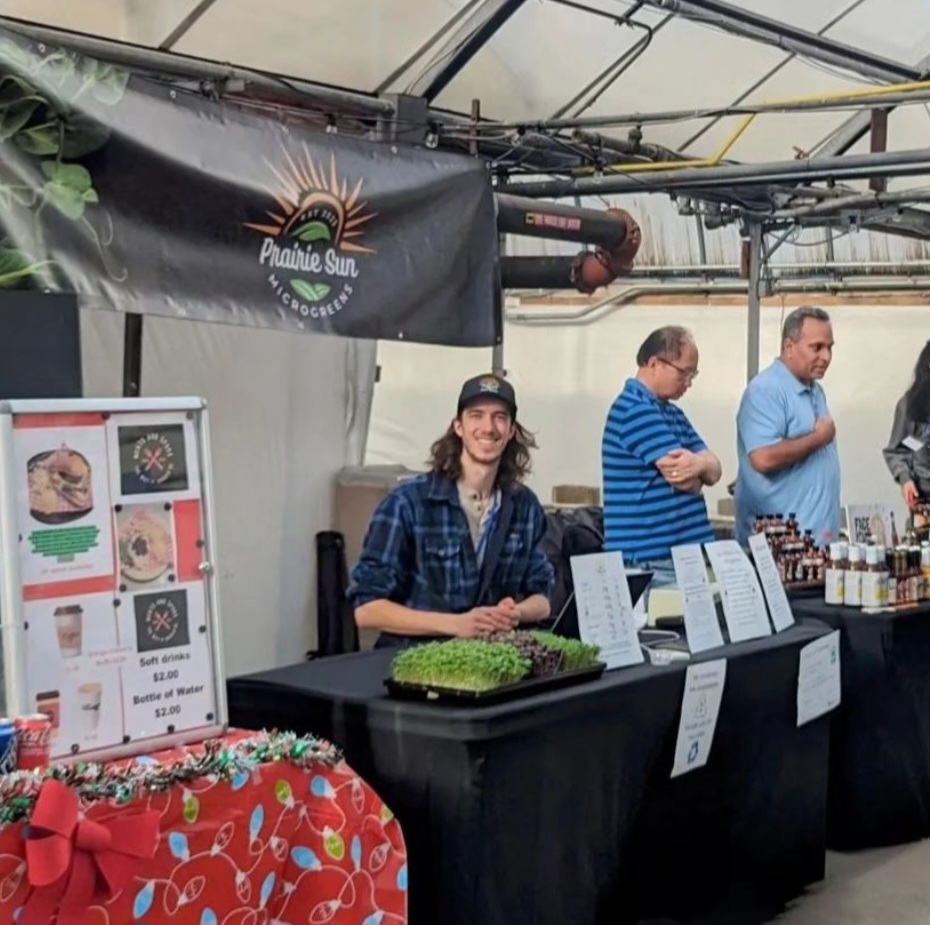Welcome back to the Helpful Gardeners Podcast! This week, the gardeners explore sprouts and microgreens to figure out why they’re so good for us, how to grow them, and even what they taste like! Plus, find out what microgreen the gardeners identify with the most in the Hypothetical Question of the week.
What are Microgreens
“Microgreens” are ‘relatively’ new! In China, “sprouts” have been used as a natural remedy for over 5000 years, but microgreens haven’t really been mainstream until the 1980’s.
- Sprouts | Usually grown in water for 2-7 days.
- Microgreens | Usually grown in a shallow tray filled with a growing medium like potting soil and harvested within 1-3 weeks. (More info here): https://isga-sprouts.org/about-sprouts/sprout-history/
Some of the benefits of microgreens include… a boost to your immune system, lowers inflammation, can help with to weight loss, can help to reduce the risk of various chronic diseases, improves gut health. Plus, their vitamin and antioxidants levels are up to 40X higher than more mature greens!
How to Grow Sprouts
Select your sprouting seed
There are so many varieties of sprouting seeds! There’s clover, mustard, lentils, mung bean, chickpea and more. There are also sprouting blends if you want diversity for your salads and sandwiches.
Select your growing container
You need something that can take a bit of water and that has a filtered opening for draining excess water. You can buy sprouting jars that are made of glass and come with a filtered top. Alternatively, you can use a sterilized jar at home with a sprouting screen or thin fabric in the lid. Be careful of fabric dyes. stay natural or use cheesecloth and secure it to the jar with a rubber band.
Optional Method: Soaking
You may want to pre-soak your sprouting seeds to kickstart the breakdown of the seed coat. Read the seed packet for custom times.
Rinse and Repeat
Keep glass out of direct sunlight to avoid build up algae and mold. Rinse seeds 2-4 times a day. Harvest within the week and keep refrigerated.
How to Grow Microgreens
Select you microgreen seed
Just like with sprouts, there are so many varieties of microgreens! Kale, pea, sunflower, radish, amaranth, broccoli, and more! We have a small selection on our website, so pop by in store or visit other local garden centres for more.
Select a growing container.
You can use the standard growing trays or other shallow container.
Tip: Grow in a recycled clam shell container! They have natural water drainage at the bottom, and they’re lids make great humidity domes to ensure your soil stays moist!
Select a growing medium.
The most popular growing medium is potting mix or seed starting mix. Light and fluffy. Stay away from anything heavy like compost and top soil. Place an inch of soil in your tray.
Plant your seeds!
There are a lot of seeds in those packs. Start small, like a couple tablespoons, and then work your way up. Sprinkle your seeds in an even layer on your soil. Add another layer of soil, just enough to cover them. You really don’t need a lot.
Water is important
Consistent watering with a spray bottle or soft flow watering can is key. You don’t want to flood your seeds and risk displacing them. Check on your seeds daily.
Use a Grow light
You want microgreens that are short and bulky, not tall and leggy. Legginess happens when your microgreen starts reaching for light. A grow light will help a lot, especially in our Canadian winters where we get less sunlight. You don’t need a super fancy grow light with lots of spectrums, just something adjustable that will live over your tray. There are grow lights that simply screw into a lamp you may already own!
Have your grow light on during the day for consistent light over 8 hours. If you attach a standard timer to your light, then you won’t have to monitor the light at all!
Fertilizer
Skip it! Everything your seed needs is located inside the seed coat. Fertilizer is beneficial when you’re developing a strong root system to support a mature plant.
Harvest
Harvest when the set leaves start appearing. Trim from the root with scissors.
Connor Thiessen
Prairie Sun Microgreens
Olds College Certified Horticultural Technician (2016), Freedom Farmers Certified Microgreens Entrepreneur 2023. He started my farm in May 2023. Previous experience working at in fresh produce at planet organic and at an organic farm while in college. He offers weekly or monthly subscription packages with home delivery throughout Calgary, plus free delivery on orders over $25. https://prairiesunmicrogreens.ca/
Call/text : 1-587-870-2464.

Q: Favourite Microgreen
Q: What kind of lighting do you use?
I use a combination of blue and red led lights, from my research this can slightly improve yield over white light. However white light can be easier to work under and monitor crop health.

Microgreens Taste Test
All Samples provided by Prairie Sun Microgreens!
Colin’s Pick: Sunflower
Sunflower microgreens are full of fibre, protein, vitamins, and minerals. They’re crunchy, sweet, and fast growing. Use them in a salad, sandwich, or on their own for a nutritious snack!
Brandi’s Pick: Pea
You know that sweet taste of a pea right out of the garden? You can capture all of that goodness in growing this microgreen indoors. You can eat them on their own, in a salad, or tossed into a stirfry.
Radish
Pretty in pink! This microgreen offers a pleasant spicy zing that sits on your tongue. They are a source of vitamins, calcium, iron, and fibre.
Broccoli
Broccoli microgreens are small and fast growing. They offer an instant punch of sweet broccoli flavour to sandwiches and salads.
Crunchy Mix (Pea, Sunflower, & Red Radish)
While microgreens are great on their own, you can create flavourful blends that offer interesting texture and balanced flavour profiles. The gardeners thought this blend lived up to it’s name.
“If you identified as a microgreen, what microgreen would have your personality?”
*************************
CONNECT WITH US
Thank you so much for supporting our podcast and for making the world a more planty place. Please subscribe, leave a rating or review and listen in for new gardening discussions every week!
Subscribe to our show on Spotify, Apple, and Google
Leave an anonymous voicemail and be featured on the show!
Instagram / Facebook
Email us info@goldenacre.ca (SUBJECT: PODCAST)

